One of the things I really dislike about buying store-bought herbs is how half of them often end up slimy.
It happens because I only need a few sprigs for a recipe (usually of something I don’t use often, like sage).
Then the bundle gets stuffed into the veggie crisper in the fridge, where it starts out on top and in front to remind me to use it again, only to gradually move farther and farther back into the part of the drawer where all produce goes to die.
Tell me I’m not the only one?!
Needless to say, I’m a huge fan of homegrown herbs. Snip a little here, snip a little there…
Growing your own is not only very rewarding, but also economical.
Disclosure: If you shop from my article or make a purchase through one of my links, I may receive commissions on some of the products I recommend.
As the season starts to wind down for the year, I find myself freezing all my excess herbs from the garden so I’m not paying a premium for organic herbs in winter.
Frozen herbs aren’t a perfect substitute for fresh, but if they’re going into sauces, dressings, or anything that requires cooking, you’d be hard-pressed to tell the difference.
And the best thing about freezing herbs?
It’s ridiculously easy… at least, the way I do it. None of that blanching nonsense here. You don’t even have to strip the leaves from the stems first.
I’m going to share with you the best ways to freeze parsley, cilantro, chives, and other herbs for winter (or anytime) use!
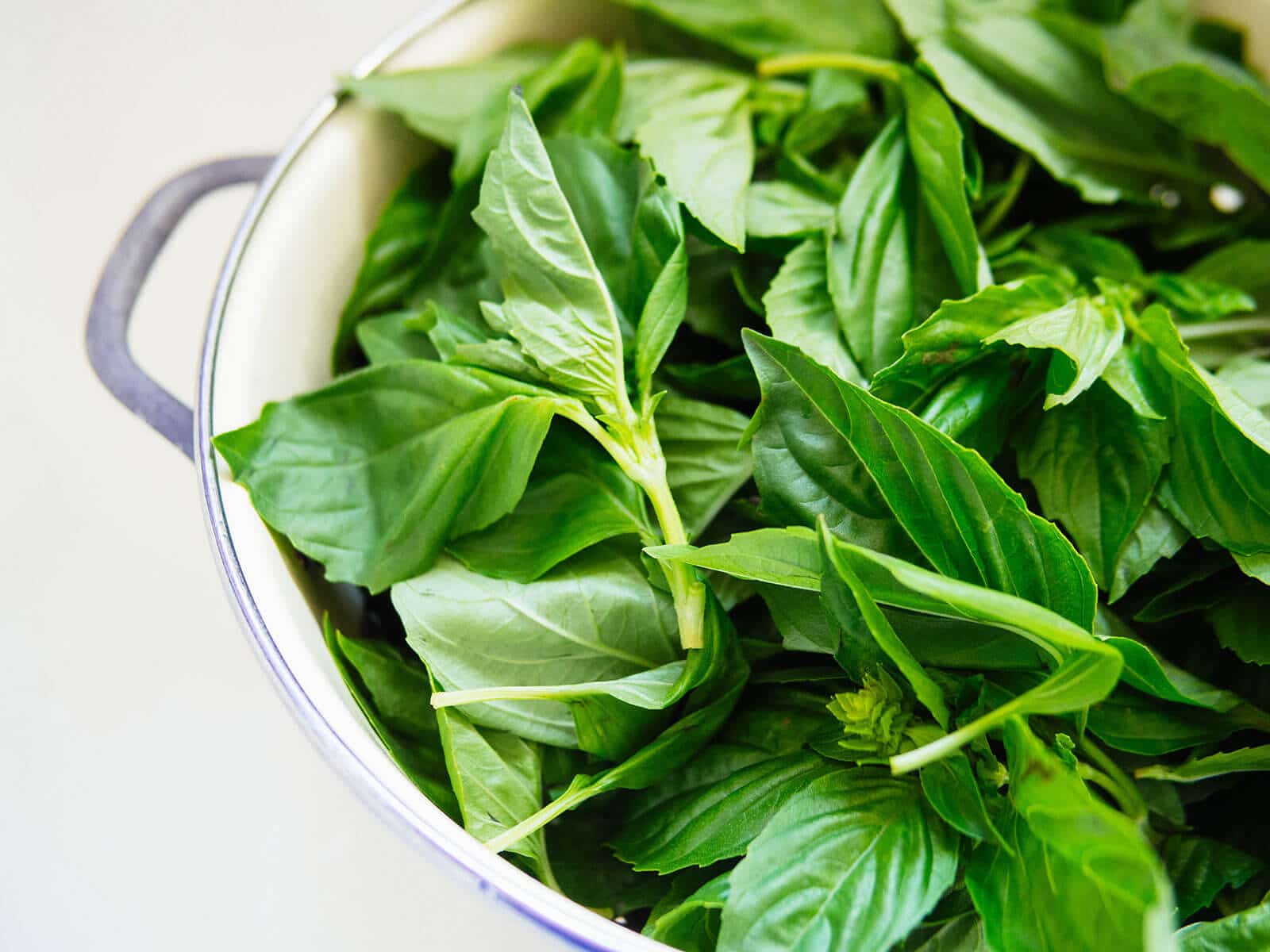
3 ways to freeze fresh herbs (quick and easy!)
1. Freezing herbs as pesto or pistou
You’re likely already familiar with pesto, and you’ve probably made plenty of it with basil.
But did you know pesto (and its French cousin, pistou) can be made with almost any green herb?
Get your food processor out and get creative with parsley, cilantro, chives, sage, fennel fronds, garlic scapes, or even a combination of your favorites.
Quick Tip
Inside The No-Waste Vegetable Cookbook, I have an ingredient matrix to help you mix and match different herbs, leafy greens, nuts, and cheeses to make the perfect, non-traditional pesto.
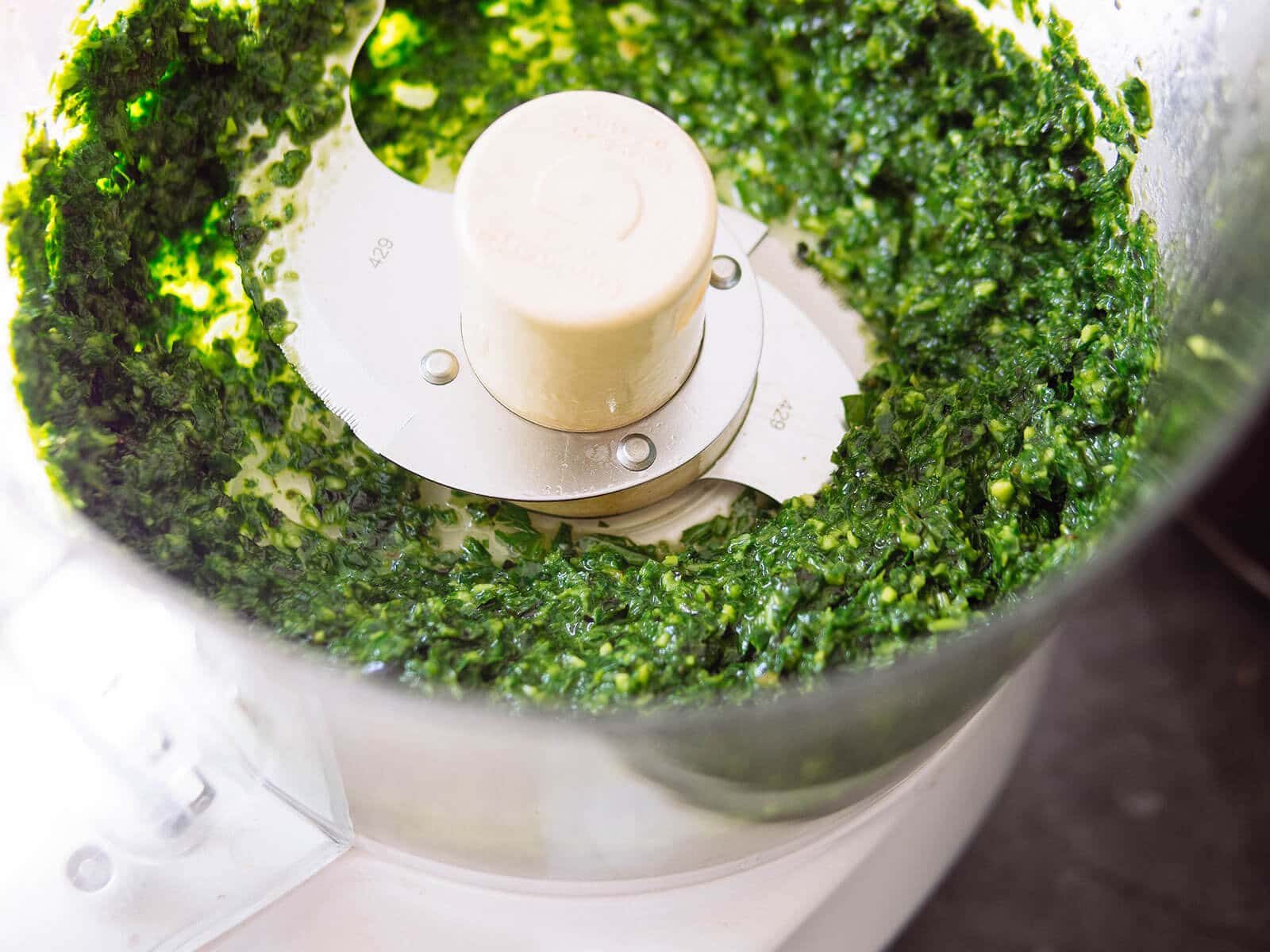
Pesto (or in this case, herb puree) can be as simple as processing the herbs with a bit of olive oil until it’s a slightly chunky to smooth consistency (depending on your preference).
Make this: How to Preserve Basil the Easy Way
This gives you the most flexibility for using it later, as you can simply drop it into soups, sandwiches, wraps, omelets, pasta, pizza, baked potatoes, quinoa bowls, or noodle bowls (without being tied to a specific flavor profile).
Or, you can make a true pesto by combining basil (and/or other leafy herbs), garlic, Parmesan, pine nuts, and a pinch of salt, and freeze it into small portions to thaw individually.
I like using these 1/2-cup freezer trays to store large batches of pesto, as I can pop out just the right amount for a family meal and keep the rest frozen and covered. (They make trays with smaller and larger portion sizes, too.)
Pistou is a variation of pesto that usually consists of basil, garlic, olive oil, and salt—the traditional recipe omits the cheese and pine nuts. But these days, it’s common to see cheese added, or sometimes even a tomato for extra flavor.
Try making your own pistou with parsley (or a mix of parsley, chives, and basil) and experiment by adding Parmesan or Pecorino to your condiment, or perhaps a handful of finely chopped plum tomato.
You can freeze and store your pesto or pistou in the trays I linked above, or knock the frozen pesto bars out and stash them in a freezer bag with all the air expressed.
Essentially, these become little “herb bombs” that you can throw into any recipe to pack in some extra flavor.
2. Freezing herbs as ice cubes
Here’s another useful technique for freezing fresh herbs, especially if you’re freezing them to muddle or infuse intro drinks. Make ice cubes with them!
Herbs that are frozen in water make more sense for lemon verbena, lemon balm, anise hyssop, mints, basil, and other herbs and edible flowers that you don’t plan to use in oil.
Toss the herb ice cubes into water, iced tea, lemonades, punches, or cocktails, or thaw them first to use in a variety of other recipes, including syrups and desserts.
Recipe to try: Homemade Vitamin Water
To make herb ice cubes, simply pack whole leaves (or chopped leaves) into an ice cube tray. Drizzle a little water over them to fill, so that a cube will form when frozen.
I have a favorite tool for doing this: a tray that holds 2-tablespoon portions with a cover over them. That way, I can make larger, more usable portions for my recipes, and keep the herb ice cubes stored in the tray. (Larger portion sizes are available as well.)
If you’re using a regular ice cube tray, pop the frozen cubes out and store them in a freezer bag with all the air expressed.
3. Freezing herbs in tightly packed or rolled freezer bags (or small jars)
Herbs with sturdy leaves and stems (such as rosemary, thyme, oregano, sage, and bay) freeze well right on the stems.
Simply cut them into 6-inch stems, spread them out in a single layer on a baking sheet, and place in the freezer.
Once frozen, pack the herbs into a freezer bag with the air expressed.
When you’re ready to use them, just pick off the leaves you need and return the rest to the freezer.
Related: How to Dry Oregano (and Other Herbs) Fast—Use the Oven!
Leafy, softer-stemmed herbs (such as parsley, dill, fennel, cilantro, tarragon, and garlic chives) can easily be frozen into logs.
Gather them into a large bundle and pack them tightly into a freezer bag. You can pack a lot of herbs in this way, so don’t be shy.
(If you typically don’t use parsley or cilantro stems in your cooking, feel free to pull the leaves off and pack them densely into the bag. This is a great way to preserve all your homegrown parsley or cilantro before they go to seed.)
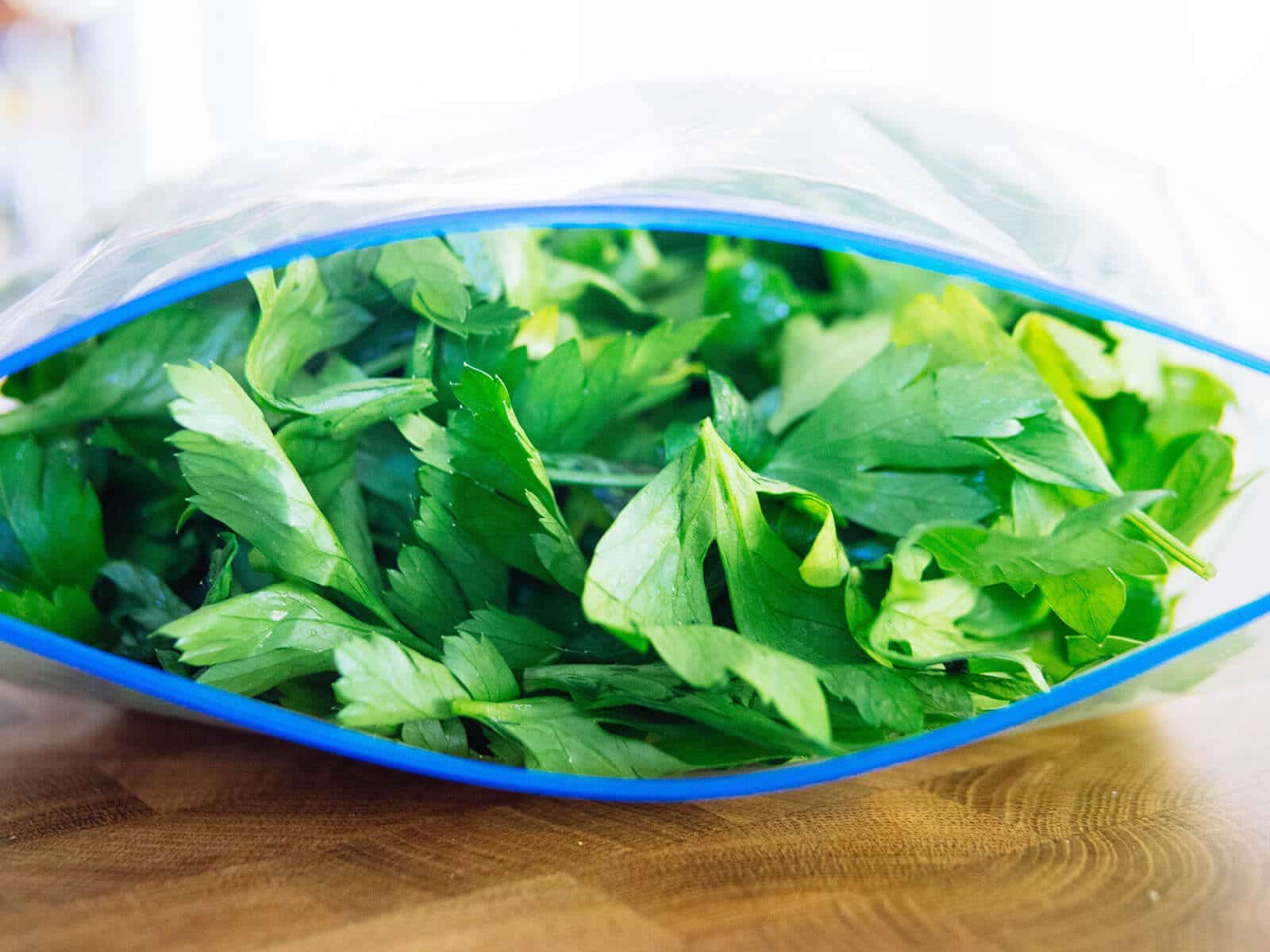
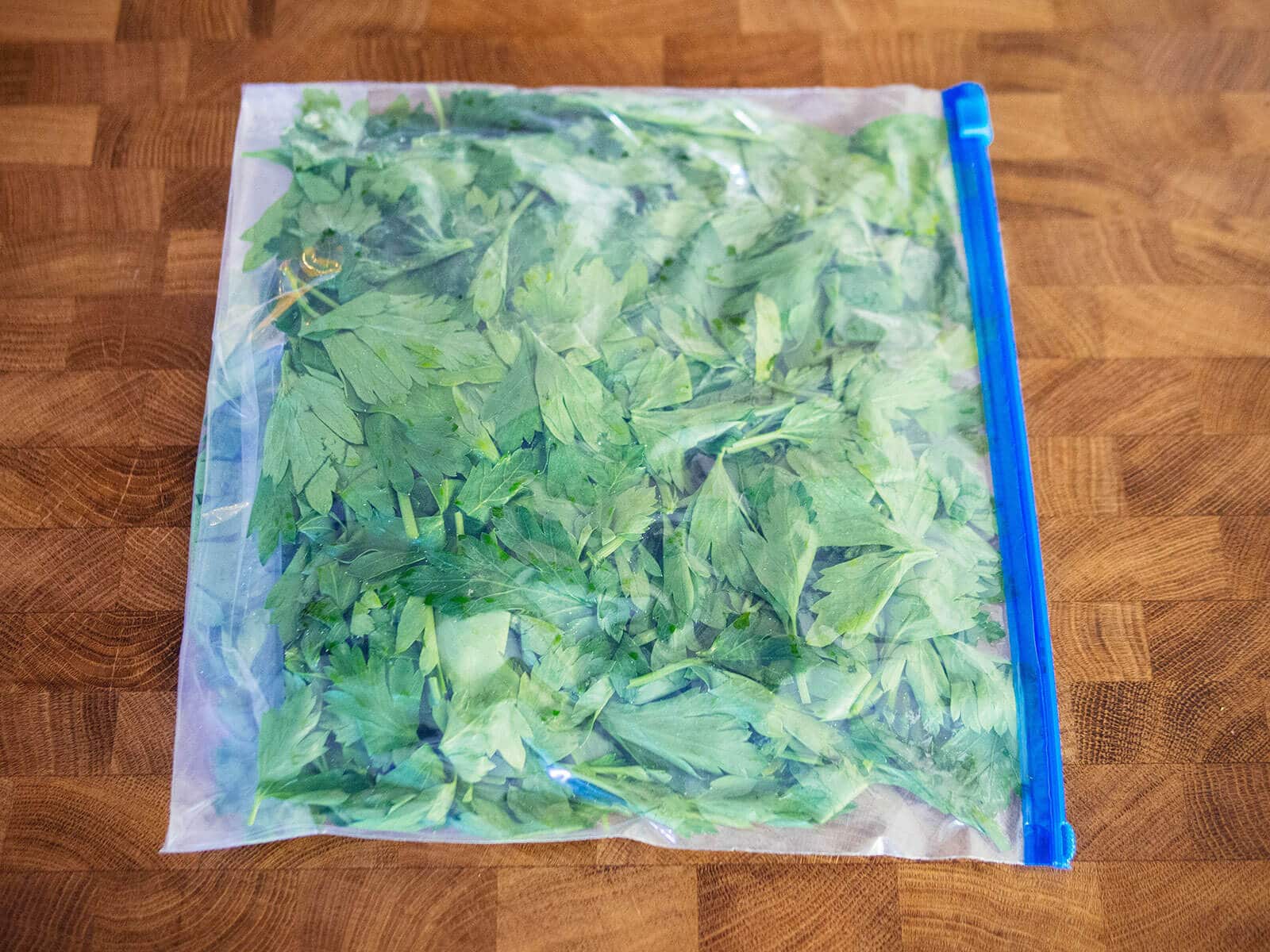
With the bag unsealed, roll the bag from the bottom up to compress the herbs and push all the air out. You should have a nice, firm log.
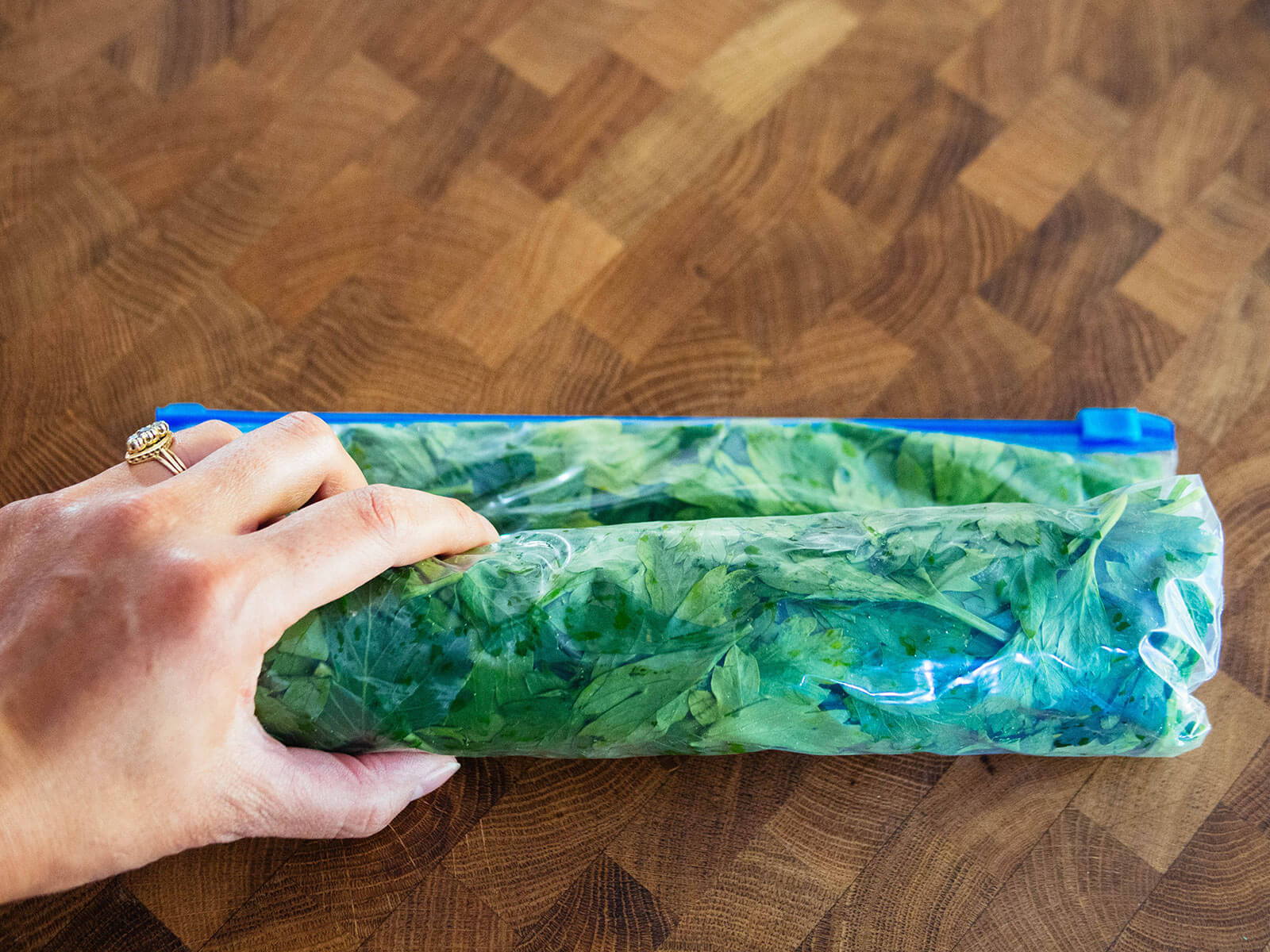
Seal the bag, secure the log with a rubberband, and freeze the whole bundle.
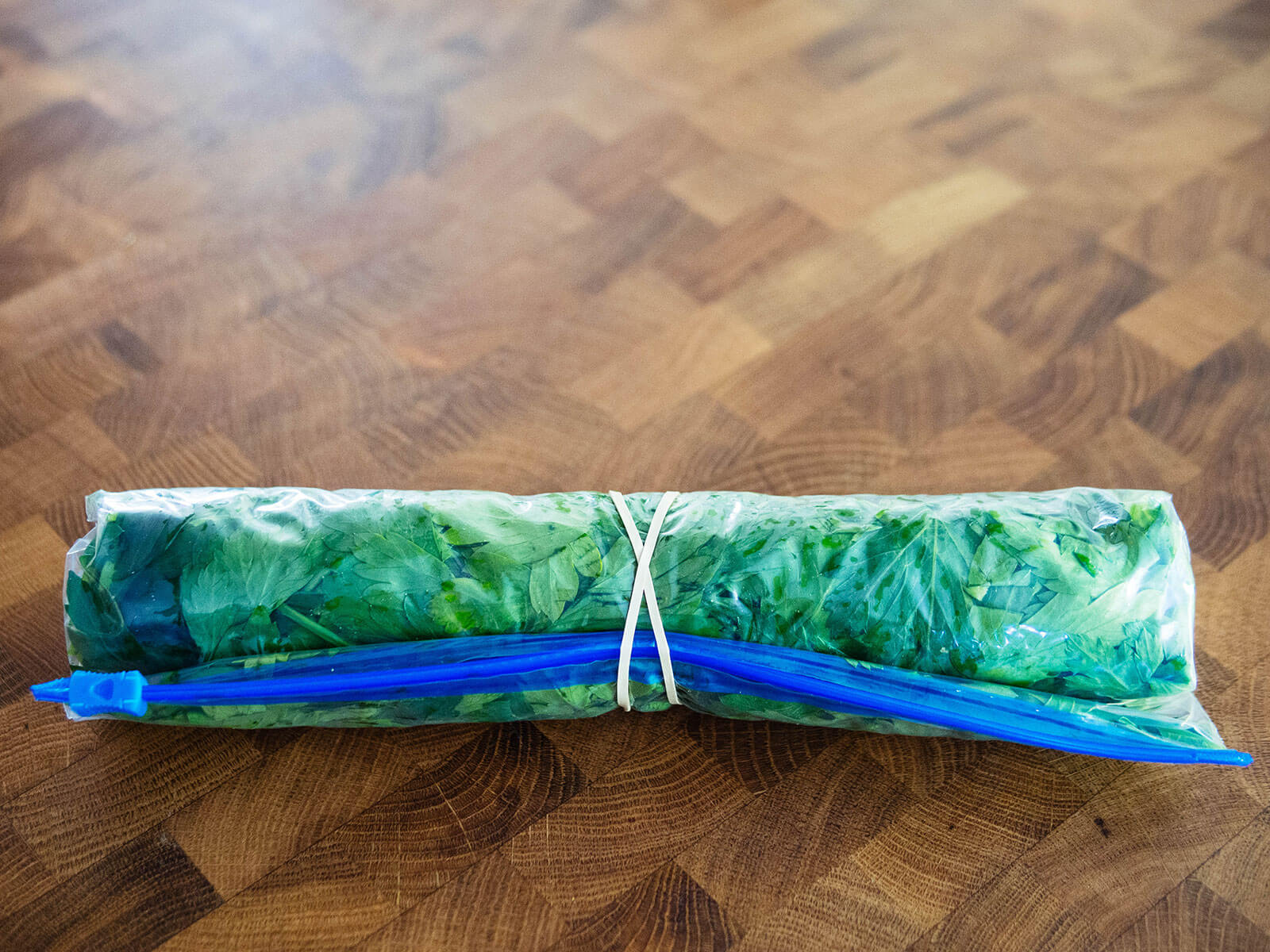
To use your frozen herbs, simply pull off a chunk as needed. Re-roll the log and return the unused portion to the freezer immediately.
Want to freeze chives?
This is one of the simplest herbs to freeze, because you can just chop them up, put them in a small jar (like a half-pint mason jar), and store in the freezer.
Quick Tip
Don’t use the metal lids and rings that came with your mason jars. Use plastic one-piece lids like these ones for freezer storage (or these more colorful lids that are also leakproof). You can also go with plastic freezer jars (in half-pint and pint sizes) if you’re worried about breakage.
Grab a pinch of frozen chives as needed and return the jar to the freezer.
You can also keep frozen chives in a freezer bag, but I find the jar method more convenient. Chives won’t clump together when frozen this way (as long as they were thoroughly dried before freezing), and it’s easier to find a jar in the freezer (rather than a bag in a sea of many bags).
Remember that once frozen herbs are thawed, they retain all their flavor but not their crispness. So don’t try to sprinkle them as a garnish on, say, grilled fish or roasted vegetables.
Use your thawed frozen herbs in recipes that are cooked, or mix them into dressings, dips, and sauces where their limpness is forgiven.
Try these other methods of preserving herbs:


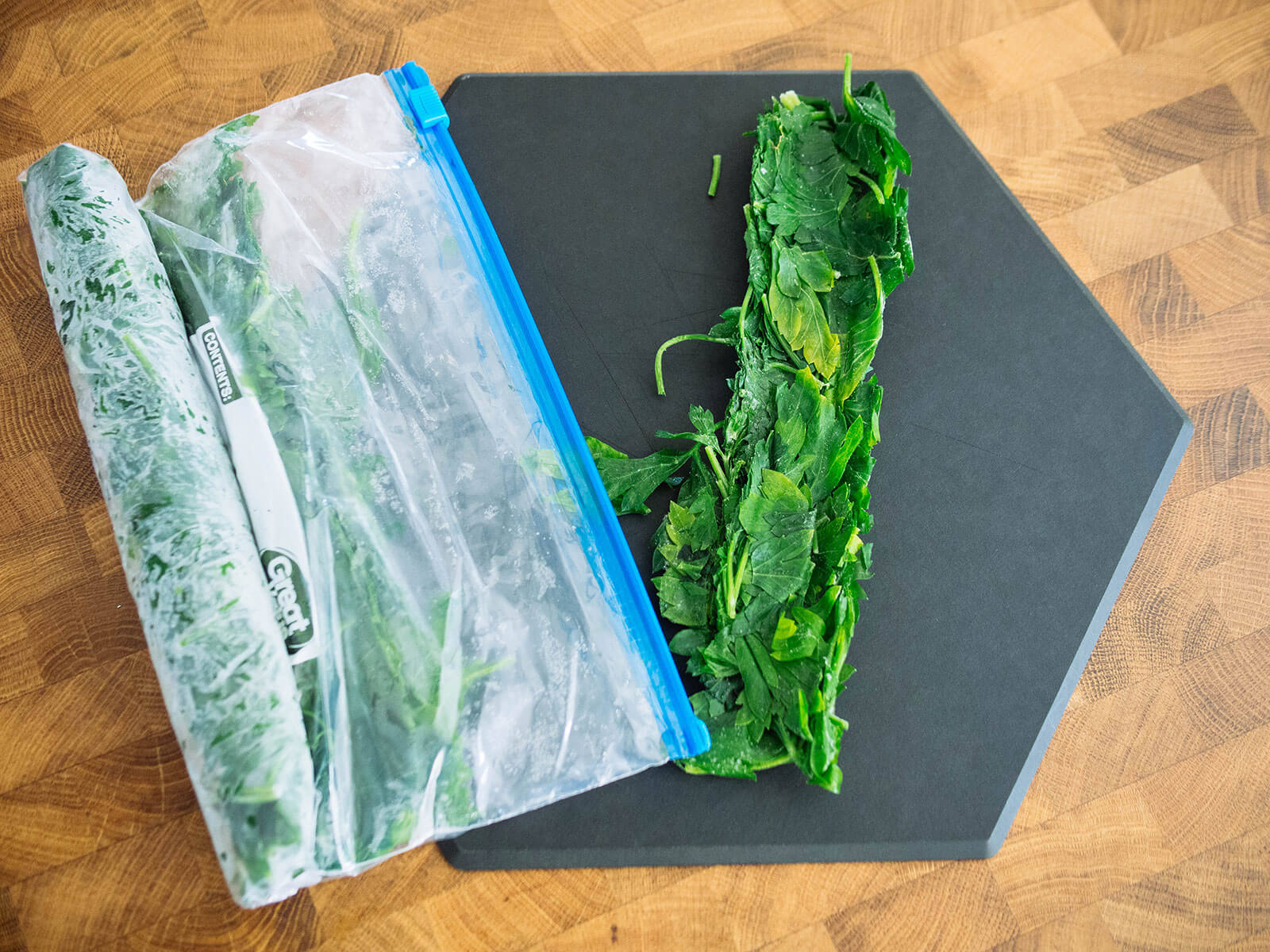

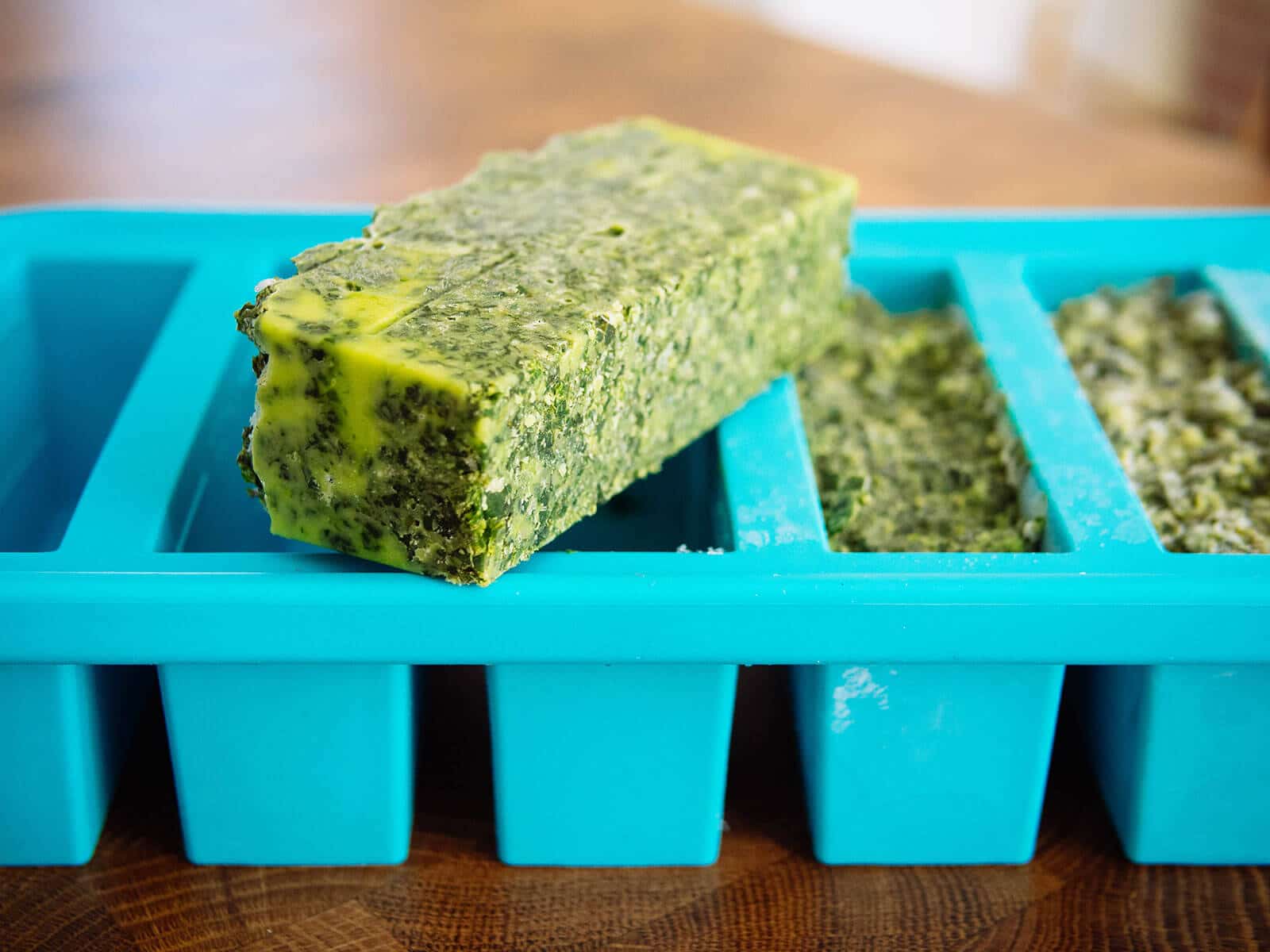

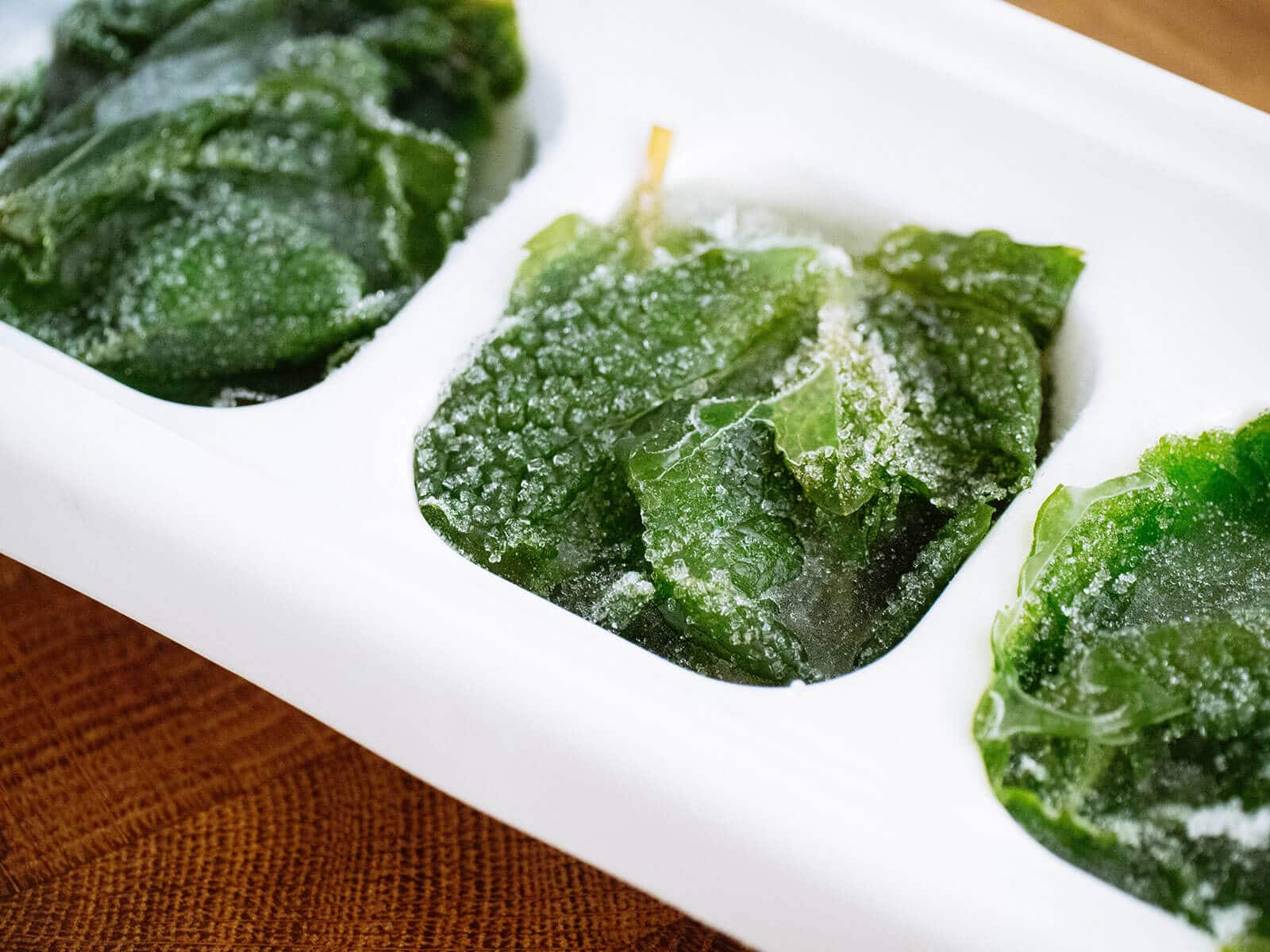
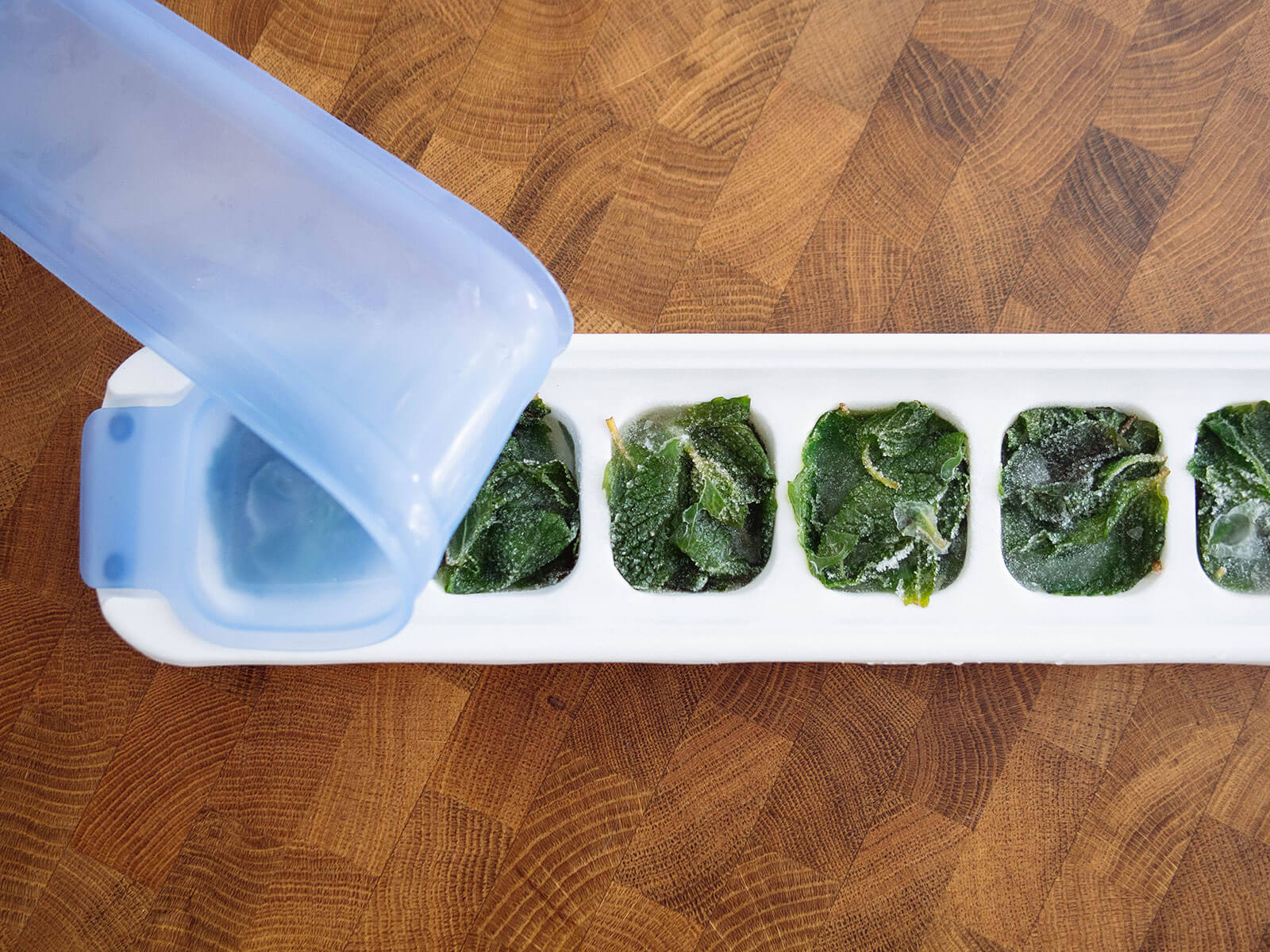
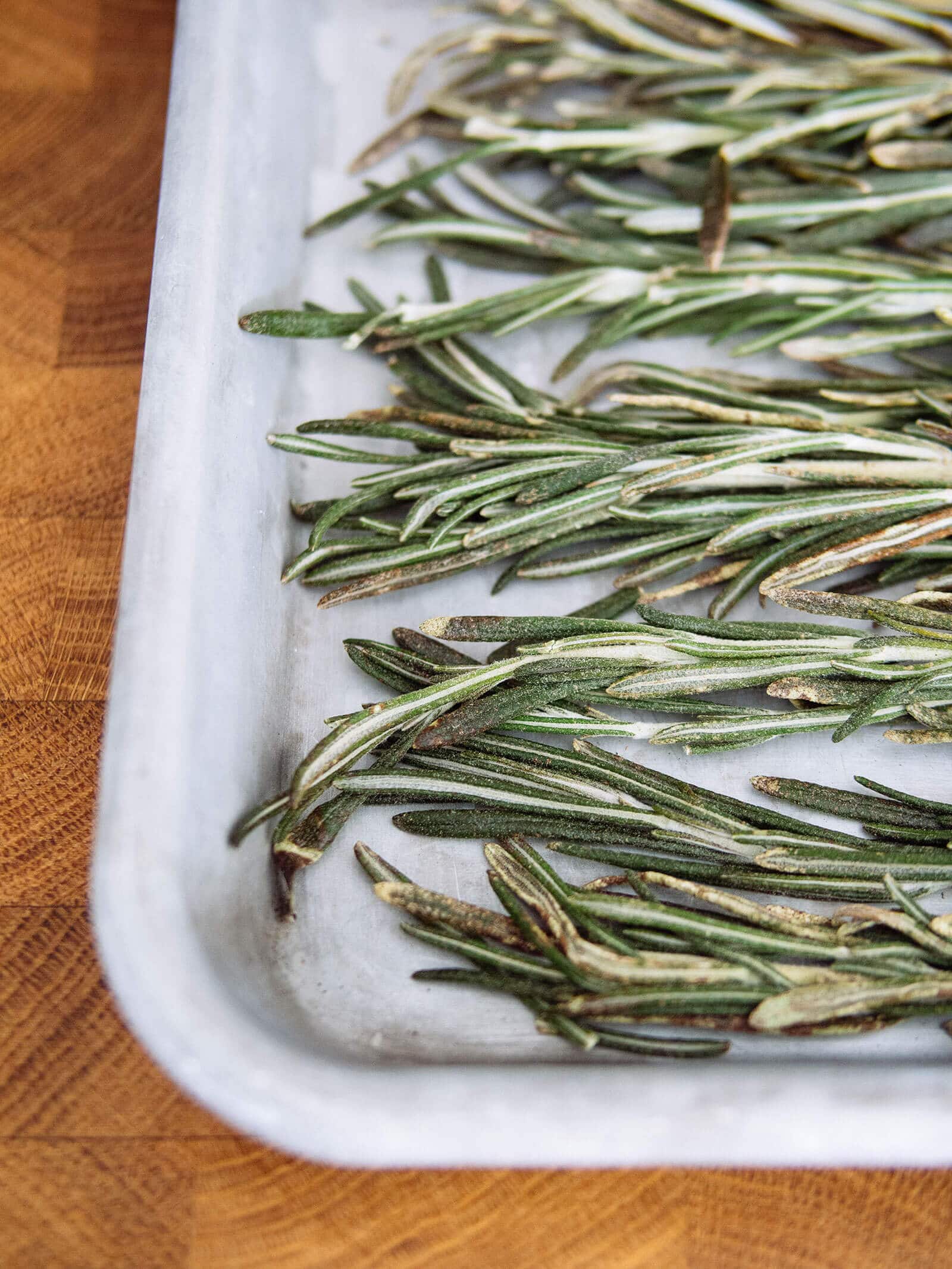
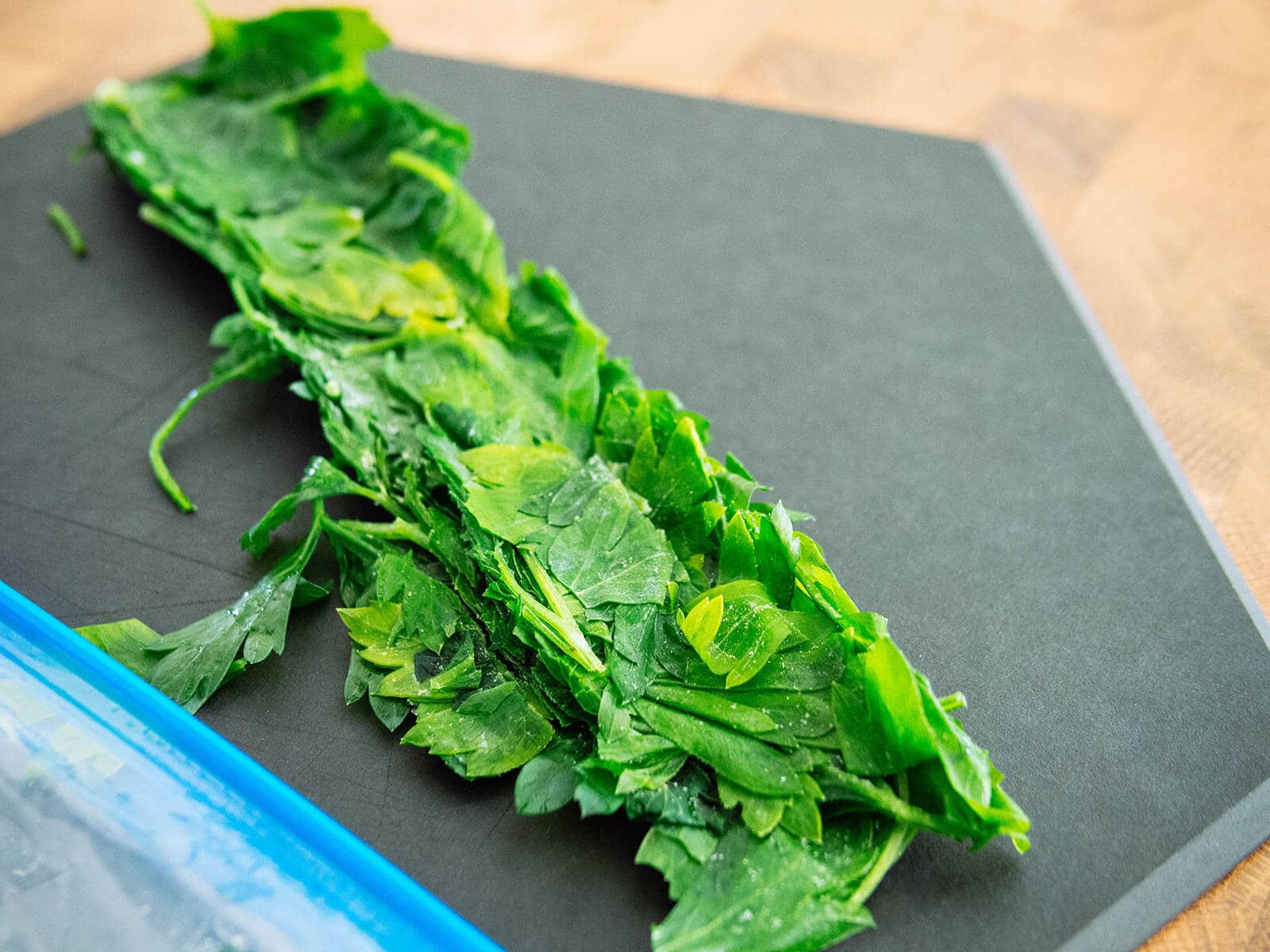
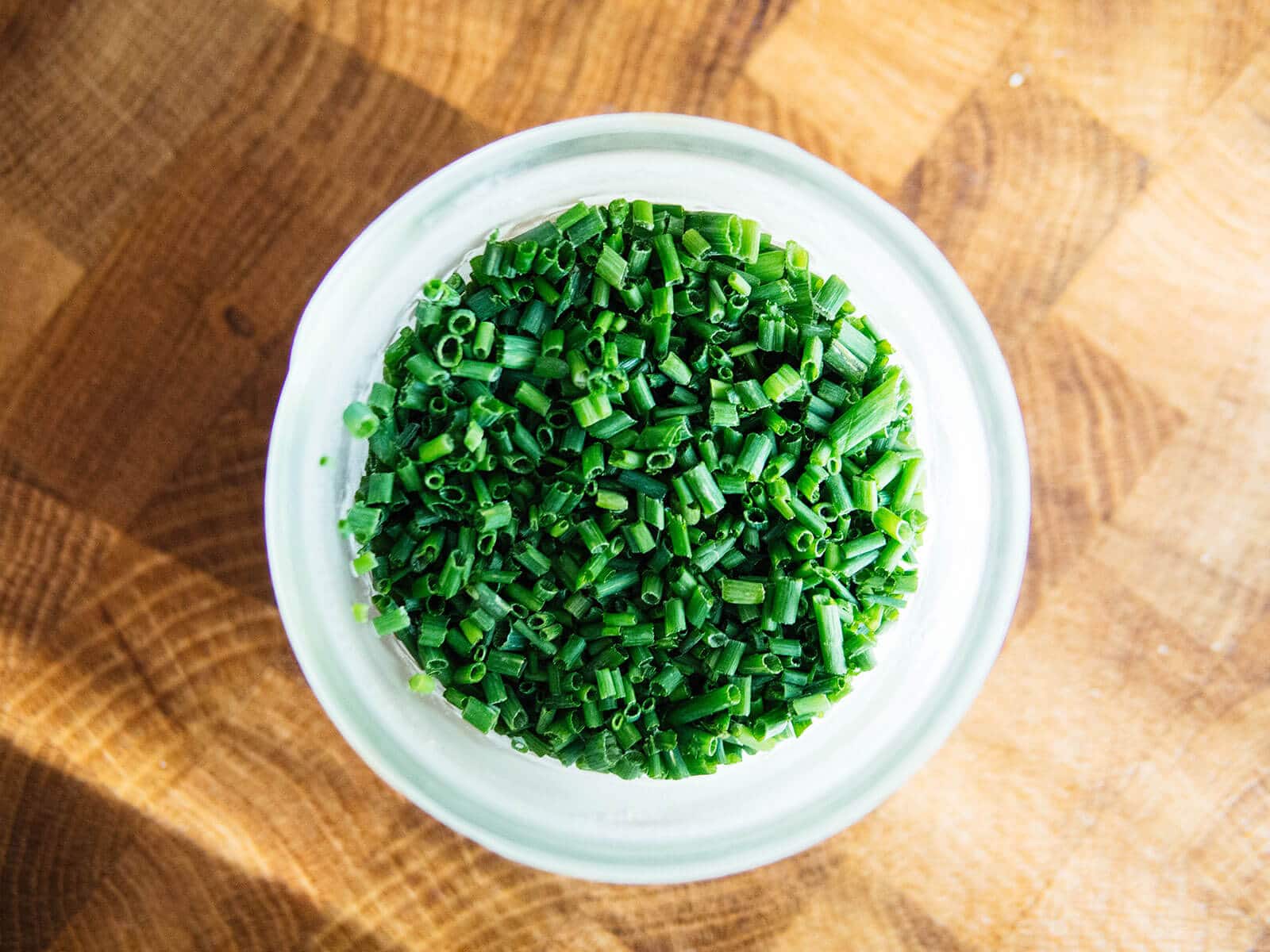













Hi, I buy my herbs directly from a farmer who just goes to his field and picks fresh, do I need to wash before freezing or wash after. I’m freezing in Jars.
Curious as to why you recommend not using metal canning lids and rings for freezing things? I reuse canning lids and rings for freezing items is this bad?
It isn’t bad, but it makes the rings more prone to rusting or warping. Canning rings are meant to be used during the canning process and left on for just a short period to ensure a tight seal. The recommendation from Ball is to remove the rings once the jars are sealed (so you store them without the rings). But if you’re reusing rings for freezing and other purposes, that’s fine too.
If I freeze the basil in cubes can I use it later to make that yummy basil syrup recipe. Or would there be a better way to freeze the basil for this?